Berlin's sights

Berlin is Germany's capital and the country's largest city, and is also a major political, cultural and scientific centre of Europe. Despite the devastation after World War II and the subsequent decades of instability east of the infamous Berlin Wall (Berliner Mauer), the city has been rebuilt and is now proud of its achievements, while never forgetting a rather sad past. Tourists can enjoy Berlin's eclectic mix of new and classic architecture, dynamic entertainment, shopping and a variety of sporting and cultural venues.
Brandenburg Gate (Brandenburger Tor)

Built at the end of the 18th century, the Brandenburg Gate is the only city gate in Berlin still in use today. It is located in the western part of Berlin at the entrance to Unter der Linden boulevard. The gate became a landmark for the regular gathering of protesters during the partition of Germany and a place of public celebration after the collapse of the Berlin Wall in 1989. It was badly damaged during the Second World War and had to undergo extensive reconstruction before it was ceremonially reopened on October 3, 2002. Today the gate is fully restored and is not only a symbol of the country's turbulent history, but also a living monument to the reunification of East and West Berlin.
Address: Pariser Platz, 10117 Berlin.
Official website: https://brandenburg-gate.de/
Reichstag building (Reichstagsgebäude)

The Reichstag is the seat of Germany's parliament and one of the country's main historic landmarks. A fire in 1933 and air raids during the Battle of Berlin in 1945 did a lot of damage to this building. The Reichstag is located near the Brandenburg Gate, and it was never completely rebuilt after the war until after the dismantling of the Berlin Wall and the complete reunification of Germany. Some historical "scars" like graffiti scrawled on the walls by Soviet soldiers after the capture of Berlin were decided to be left for posterity as a reminder of the country's dark past. The building was designed by a number of different architects, and the combination of several styles in the completed project was initially regarded by many as highly controversial, but today it is a feature which attracts thousands of tourists every year. The glass dome at the top of the Reichstag offers a magnificent view over the city.
Address: Platz der Republik 1, 11011 Berlin.
Official webpage: https://www.bundestag.de/besuche/architektur/reichstag/
Memorial to the Murdered Jews of Europe (Denkmal für die ermordeten Juden Europas)
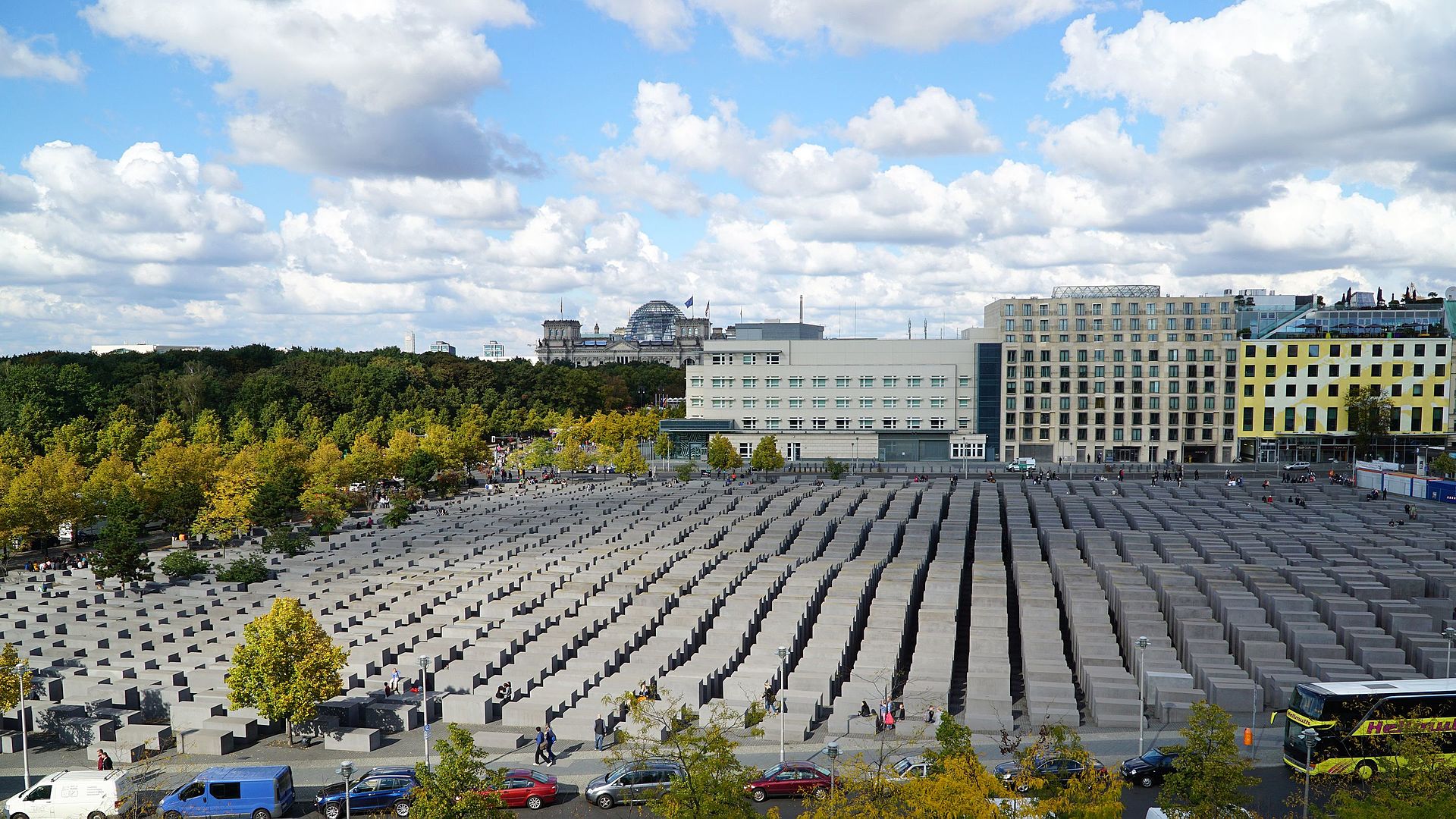
Not far from the Brandenburg Gate you can see the memorial to the victims of the Holocaust, dedicated to the Jews who died as a result of Adolf Hitler's monstrous plans. The 2,711 slabs are arranged in a wave pattern over an area of over 19,000 square metres. Every stone here is unique, varying in height from a few centimetres to two metres. There is no uniform traffic pattern here, and visitors can walk in any direction as they pass the silent grey stones. Underneath the memorial, there is an underground information centre that tells the stories of people who suffered at the hands of the Nazis.
Address: Cora-Berliner-Straße 1, 10117 Berlin.
Official website: https://www.stiftung-denkmal.de/
East Side Gallery
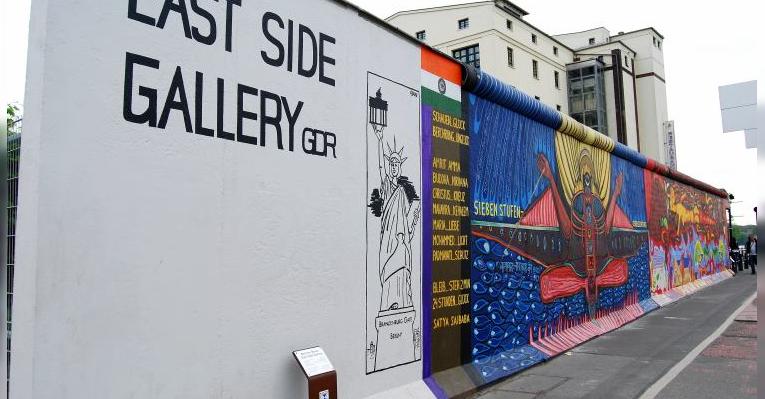
The East Side Gallery is the longest surviving part of the Berlin Wall. It is often referred to as the "Monument of Freedom", showcasing paintings by artists from all over the world. The works of art that began to appear there in 1990 demonstrate the change in people's attitudes after the fall of the Berlin Wall, and express the hope for a brighter future for the world. One section of the wall has been moved to make construction easier, while another has been damaged by erosion or desecrated by vandals.
Address: Mühlenstraße 3-100, 10243 Berlin.
Official website: http://eastsidegallery-berlin.com/
Museum Island (Museumsinsel)

Museum Island is a collection of five museums located at the northern end of Spreeinsel island on the River Spree. Like many other buildings in Berlin, the old museum buildings were almost completely destroyed during World War II and had to be rebuilt. The Old Museum (Altes Museum) displays ancient Greek and Roman artefacts, while the Old Nationalgalerie (Alte Nationalgalerie) houses Germany's largest collection of paintings and sculptures from the 19th century. The New Museum (Neues Museum) contains prehistoric artefacts and examples of Egyptian art, including a bust of Queen Nefertiti. The Pergamonmuseum (Pergamonmuseum) has another display of ancient Greek and Babylonian artefacts, with the Ishtar Gate and the Pergamon Altar as highlights. The Bode-Museum has an extensive collection of sculptures, coins and paintings.
Address: Bodestraße 1, 10178 Berlin.
Official website: https://www.museumsinsel-berlin.de/
Unter den Linden Boulevard

Berlin's oldest and most majestic boulevard stretches from east to west from Museum Island to the Brandenburg Gate. The wonderful lime trees that gave Unter den Linden its name were planted back in 1647, but the boulevard only gained its current appearance in the 18th century during the reign of Frederick the Great (Friedrich II. der Große). Its landmarks such as the Zeughaus, the State opera (Staatsoper Berlin) and the Humboldt University (Humboldt-Universität zu Berlin) all appeared there during this period. The list of alumni can boast names like Albert Einstein, Karl Heinrich Marx, Friedrich Engels and Georg Wilhelm Friedrich Hegel. Many of the historical monuments on Unter den Linden were destroyed or badly damaged during World War II and were only rebuilt after German reunification.
Address: Unter den Linden, 10117 Berlin.
Kaiser Wilhelm Memorial Church (Kaiser-Wilhelm-Gedächtnis-Kirche)

The Kaiser Wilhelm Memorial Church is located in the centre of Breitscheidplatz. The church was originally built between 1891 and 1895 by Kaiser Wilhelm II, but during World War II it burned down after being hit by an Allied bomb — only the ruined west tower remains of its former beauty. In 1961 a new church was built around the ruins, consisting of four buildings. Photographs of the original church can be found in the surviving west tower, along with some of the original mosaics.
Address: Breitscheidplatz, 10789 Berlin.
Official website: https://www.gedaechtniskirche-berlin.de/
Potsdamer Platz
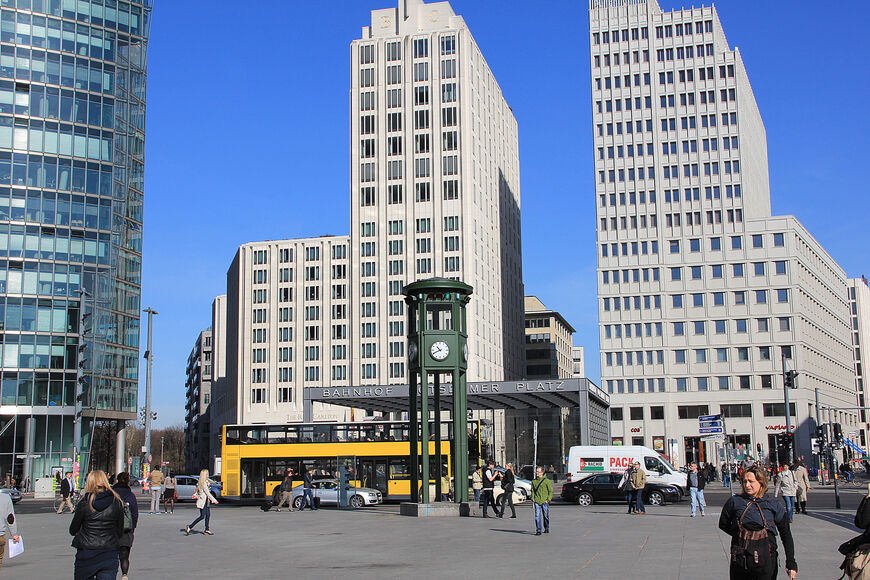
This lively corner of Berlin has a thriving arts, entertainment and commerce scene. The square was completely destroyed after World War II, but it was quickly rebuilt and transformed. The area is a symbol of the reunification of the two halves of Berlin, bringing residents from both sides together in a completely new part of the city. In the middle is an exact replica of Germany's first traffic light system, and on the perimeter are elegant, modern office buildings. There is the atrium of the DaimlerChrysler office, a cinema and film museum in the Sony Center, and a shopping mall and 3D IMAX cinema.
Address: Potsdamer Platz, 10785 Berlin.
Official website: https://potsdamerplatz.de/
New museum (Neues Museum)

The new museum was established in 1855 and suffered destruction during the Second World War in 1945. It remained in disrepair throughout the post-war period. Finally, in 2009, its treasure trove of ancient artefacts was finally moved back home from Altes Haus. There are separate galleries for artefacts from Ancient Rome and Greece, but the treasures from Ancient Egypt and especially the bust of Queen Nefertiti are the main attractions. The 3,350-year-old bust was discovered in Amarna in 1912 and has been a frenzied tourist attraction ever since. However, the bust of Nefertiti is just one of many interesting exhibits, as you can find literally everything from hieroglyphic tablets to ancient sarcophagi.
Address: Bodestraße 1-3, 10178 Berlin.
Official webpage: https://www.smb.museum/museen-einrichtungen/neues-museum/
Berlin Art Gallery (Berliner Gemäldegalerie)

The Berlin Art Gallery, one of the world's finest museums of fine art, displays paintings by some of Europe's greatest artists up to the 18th century. Tourists will want to visit if they have heard of such names as Sandro Botticelli, Albrecht Dürer, Pieter Paul Rubens, Rembrandt Harmenszoon van Rijn, Hans Holbein der Jüngere, Raphael (Raffaello Sanzio) or Jan Vermeer van Delft. Visitors have the chance to see 1,250 paintings by Europe's greatest masters. You can lose track of time looking at all these masterpieces.
Address: Matthäikirchplatz, 10785 Berlin.
Official webpage: https://www.smb.museum/museen-einrichtungen/gemaeldegalerie/home/
Checkpoint Charlie
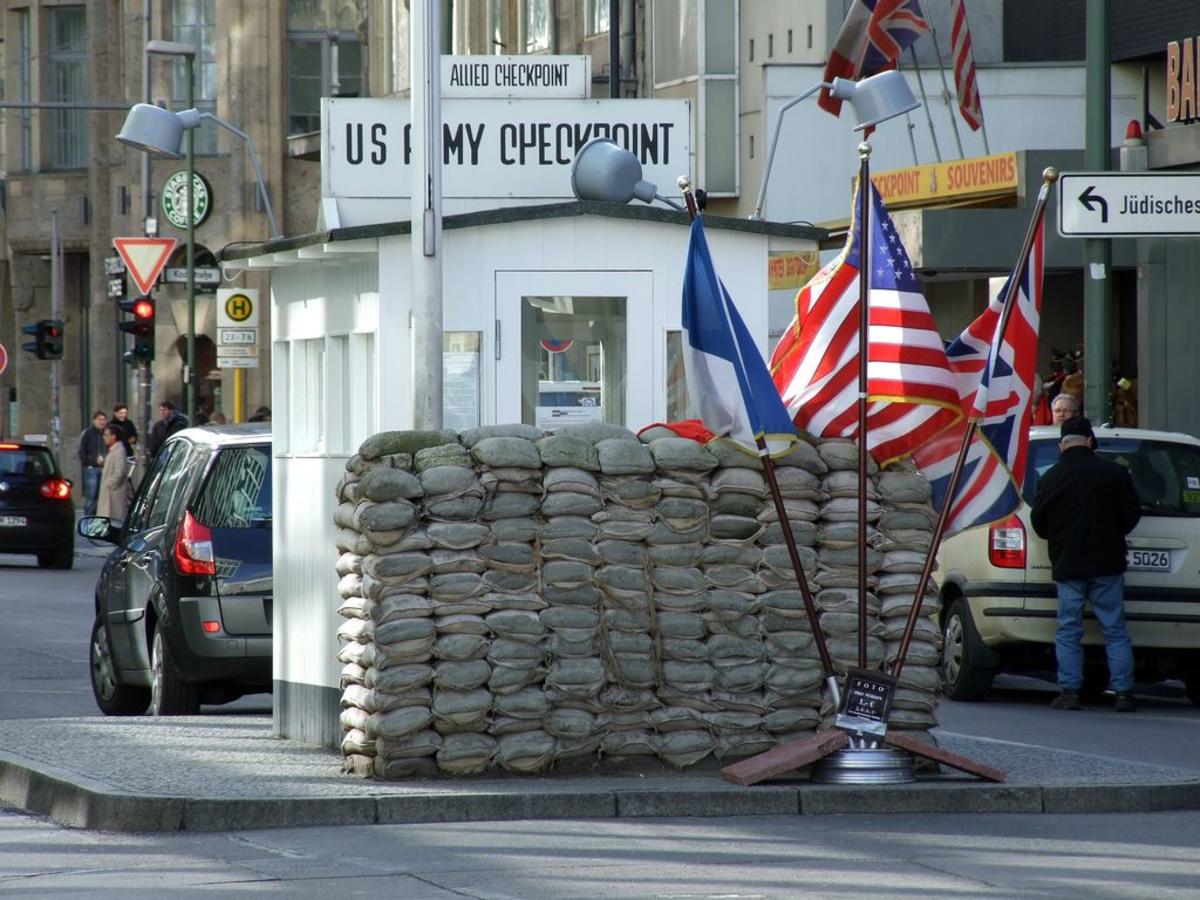
Checkpoint Charlie is one of the most famous checkpoints of the Berlin Wall and has great emotional and historical significance for the city. This border crossing, so named by the Western Allies, had a sign that read "You are leaving the American sector". It was a single checkpoint for members of Allied forces and foreigners. The guard's booth that once stood there is now on display in the Allied Museum (AlliiertenMuseum). There is a replica of an army guard post at the crossroads, and the cobblestones are used to symbolically mark the location of the former border. If you want to learn more about the fate and history of the site, you can visit the Berlin Wall Museum (Mauermuseum), also called the "house museum at Charlie's Checkpoint" (Museum Haus am Checkpoint Charlie).
Address: Friedrichstraße 43-45, 10117 Berlin.
Official webpage: https://www.berlin.de/sehenswuerdigkeiten/3560059-3558930-checkpoint-charlie.html
Great Tiergarten Park (Großer Tiergarten)

The Great Tiergarten Park, located in the centre of Berlin, was once used as hunting grounds for the Brandenburg elite. To commemorate Prussian victories, a majestic Victory Column (Siegessäule) was erected in the park, which can be reached by pedestrians through any of four underground tunnels. Next to the column is Bellevue Palace (Schloss Bellevue), a beautiful palace that is the official residence of the German president.
Address: Str. des 17. Juni, 10785 Berlin.
Official website: https://www.web-bb.de/
The Hack Yards complex (Hackesche Höfe)

The Hack Yards complex, located at the end of Oranienburger Straße in Scheunenviertel, consists of eight enclosed interconnected courtyards. It was designed and built by architect Kurt Berndt and the Art Nouveau façade is the work of Ernst Moritz August Endell. Like other similar structures in Berlin, the complex was used to house offices, shops, and flats. During the Second World War the buildings were only partly damaged, but during the partition of Germany they were forgotten about for a time. Only after the country's reunification in 1993 did the complex begin to be restored and today it looks better than ever. There are plenty of cafés, restaurants and shops to which many locals and tourists come every day.
Address: Rosenthaler Str. 40 / Sophienstraße 6, 10178 Berlin.
Official website: https://www.hackesche-hoefe.de/
Pergamon Museum (Pergamonmuseum)

Pergamon Museum is located on Museum Island. It was named after the Pergamon Altar, which is one of its most valuable exhibition highlights. The Pergamon Museum is the most visited art museum in Germany and boasts an incredible collection of antiquities and treasures. A visit to the museum is a way to immerse yourself in the atmosphere of antiquity. Other highlights of the Pergamon Museum include the gate of the goddess Ishtar, the Mshatta frieze from the desert castle in Jordan and the Miletus market gate, built in Rome in the 2nd century AD.
Address: Bodestraße 1-3, 10178 Berlin
Official webpage: https://www.smb.museum/museen-einrichtungen/pergamonmuseum/home/
The Topography of Terror Museum (Topographie des Terrors)

One of Berlin's most striking attractions is its information and exhibition centre and open-air museum called Topography of Terror, located on the site of the former SS headquarters of the Third Reich. Former prison cells were excavated especially for the museum to show everyone the tragedies and horrors of the Nazi regime. The exhibits focus on the Jewish ghettos of Berlin, the Nazi criminals brought to justice at the Nuremberg trials, and all those who died at the hands of the Nazis. A visit to this museum will definitely not leave you indifferent.
Address: Niederkirchnerstraße 8, 10963 Berlin.
Official website: https://www.topographie.de/topographie-des-terrors/
Berlin Zoo (Zoologischer Garten Berlin)

Berlin's Zoological Garden is Germany's oldest zoo and remains one of the country's most popular attractions, attracting millions of visitors each year. Founded in 1844 and completely rebuilt after World War II, this zoo has earned its grand reputation for numerous successful breeding programmes and is renowned for providing an authentic habitat for all native animals. There are almost 20,000 animals living here, ranging from Arctic wolves to African zebras. Berlin Zoo is home to giant pandas, two species of giraffe and a flock of miniature African penguins, which are very popular with children. The zoo boasts Europe's largest aviary as well as a giant aquarium housing over 9,000 creatures, including reef and tiger sharks, jellyfish, tropical fish, reptiles and more. Another interesting zoo in Berlin, the Tierpark, is home to around 7,250 animals belonging to 840 different species.
Address: Hardenbergplatz 8, 10787 Berlin.
Official website: https://www.zoo-berlin.de/
Gendarmenmarkt Square (Gendarmenmarkt)
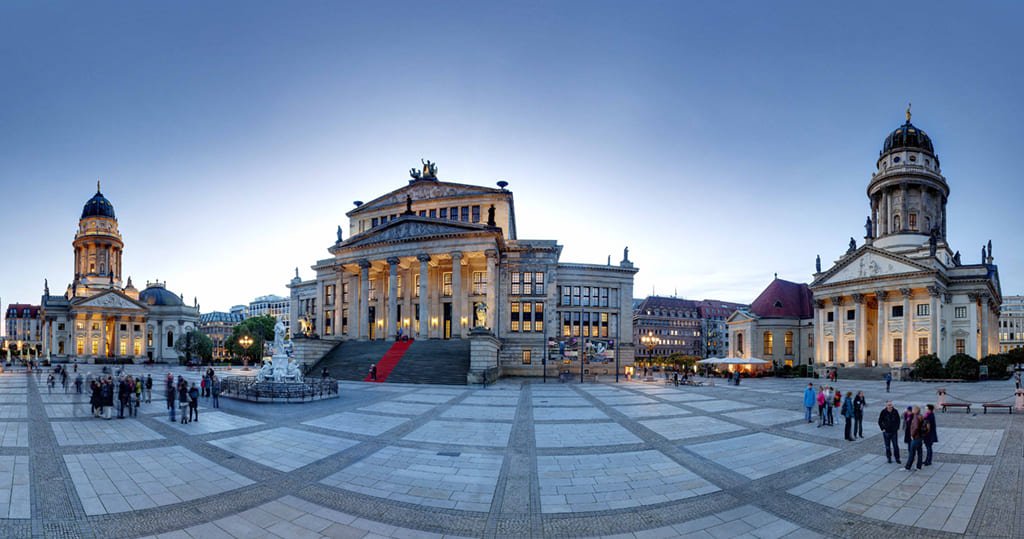
Gendarmenmarkt is Berlin's main public square, with a history dating back to the 17th century. Although many of the historic buildings on the Gendarmenmarkt were destroyed during World War II, some key landmarks have survived. A visit to the Gendarmenmarkt includes the German Cathedral (Deutscher Dom) and French Cathedral (Französischer Dom), the latter of which was built by the Huguenots at the beginning of the 18th century. Gendarmenmarkt is also home to the beautifully refurbished Konzerthaus, where the Berlin Symphony Orchestra (Berliner Philharmoniker) performs. In winter, the main event on the square is the fancy Christmas market.
Address: Gendarmenmarkt, 10117 Berlin.
Official webpage: https://www.berlin.de/sehenswuerdigkeiten/3560277-3558930-gendarmenmarkt.html
Victory Column (Siegessäule)
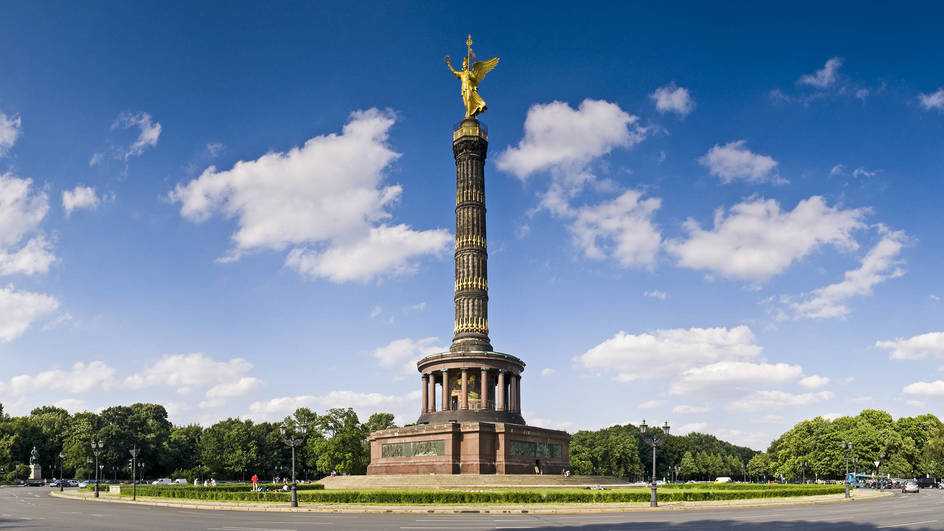
The Victory Column was built at the end of the 19th century to commemorate a series of military victories won by the Prussian army in Europe. The column originally stood in front of the Reichstag, but was later moved to the centre of Tiergarten by the Nazi government as part of a major plan to rebuild the city. At the very top of the column is a winged figure representing Victoria, the Roman goddess of victory. At the top of the Victory Column is an observation deck that offers a panoramic view of the city. The only problem is there is no lift. You have to climb 285 steps to get to the top.
Address: Großer Stern, 10557 Berlin.
Official webpage: https://www.berlin.de/sehenswuerdigkeiten/3560160-3558930-siegessaeule.html
Charlottenburg Castle (Schloss Charlottenburg)
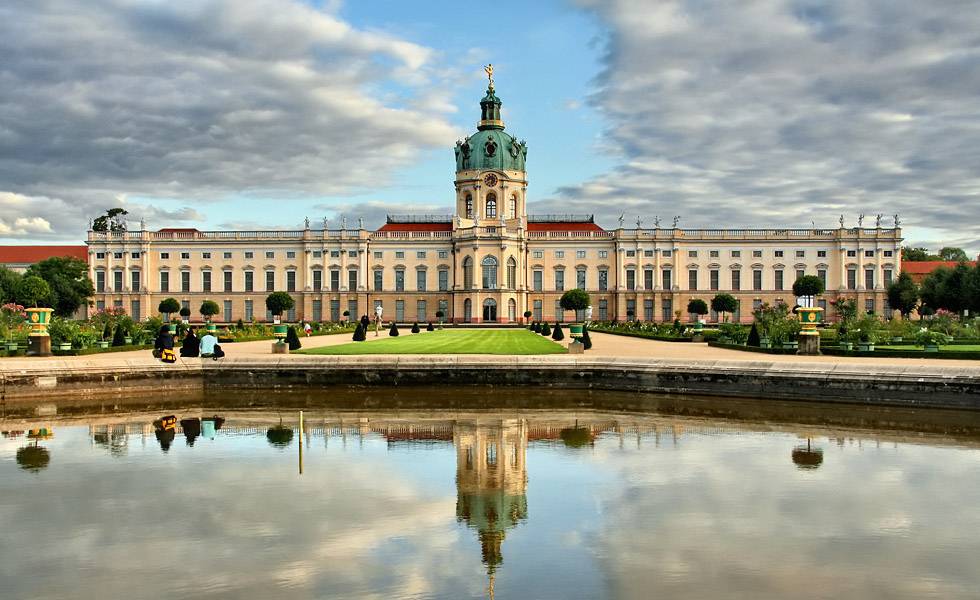
Palace sightseers should not miss the Charlottenburg Castle. It is the largest palace in Germany and is located in Berlin's City West district. Charlottenburg Castle was built at the end of the 17th century, and later the Berlin district of the same name grew up around it. Once a closed Baroque palace with beautiful gardens and sculptures, it is now open to the public. Tourists can explore the beautifully restored rooms and the extravagantly rococo interior of Frederick the Great's (Friedrich der Große) apartments, as well as the large collection of porcelain, jewellery and royal silver that is on display here for all to see.
Address: Spandauer Damm 10-22, 14059 Berlin.
Official website: https://www.spsg.de/schloesser-gaerten/objekt/schloss-charlottenburg-altes-schloss/
Alexanderplatz
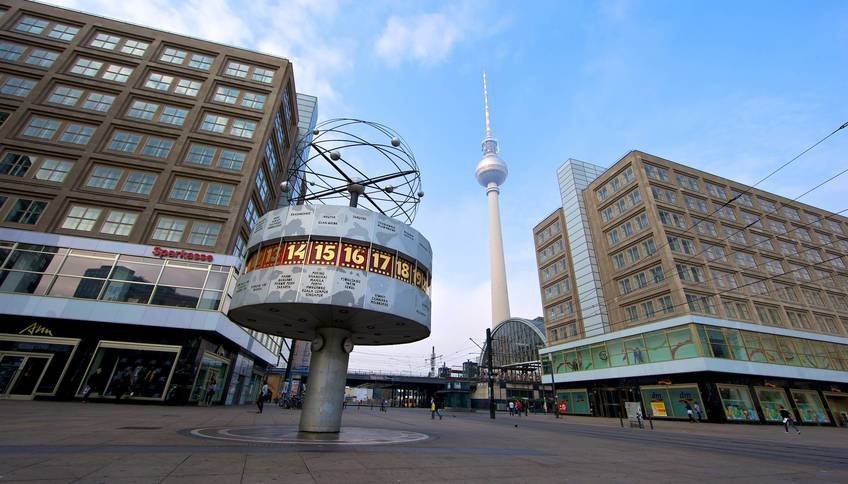
When in Berlin, tourists somehow end up at Alexanderplatz. This large public square is located in the heart of the Mitte district. Today it is Berlin's main transport hub. Some of Berlin's most popular historical landmarks can be found here. On Alexanderplatz you'll find the majestic Berlin TV Tower (Berliner Fernsehturm), the famous Weltzeituhr (World Clock), the Neptune fountain (Neptunbrunnen), and many local shops, restaurants and even a casino. It is also home to Galeria Kaufhof, one of the busiest shopping centres in the area.
Address: Alexanderplatz, 10178 Berlin.
Official webpage: https://www.berlin.de/sehenswuerdigkeiten/3560109-3558930-alexanderplatz.html
Berlin Cathedral (Berliner Dom)
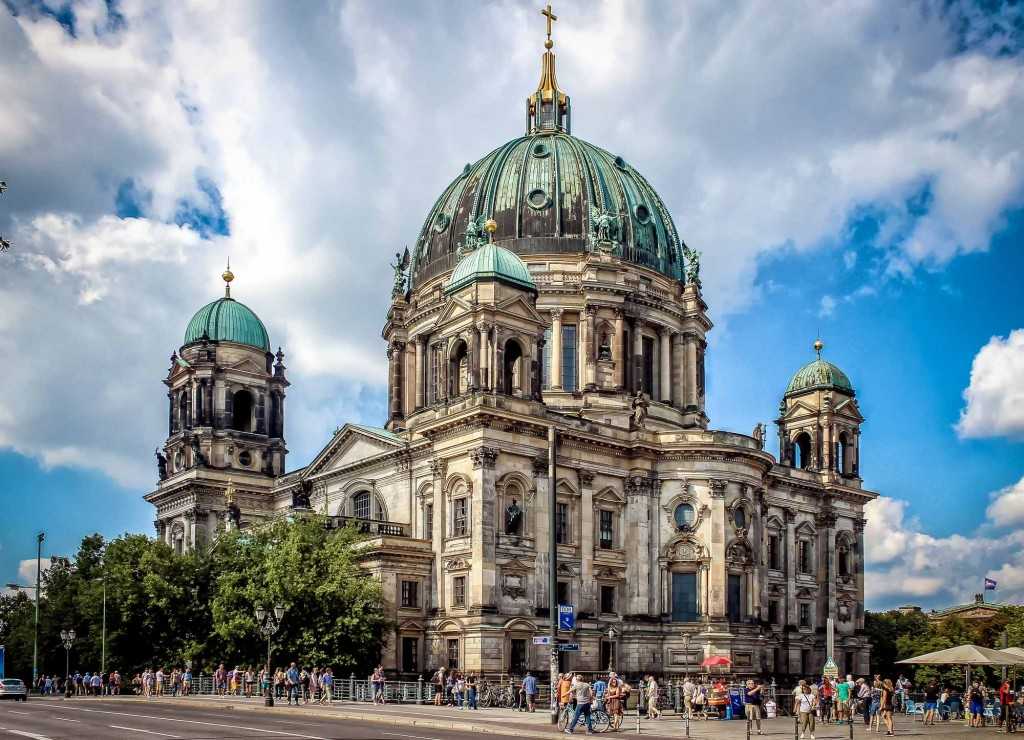
Berlin has many wonderful churches, but Berlin Cathedral is the largest and one of the most beautiful in the capital. It was built in the early 20th century to express the might of Germany's imperial power. It's a neo-Renaissance brick building located in the Museum Island district. The main pride of the cathedral is the huge organ, which is still used for religious services. When you visit this cathedral, you can climb to the top of its dome and enjoy a magnificent view of the city.
Address: Am Lustgarten, 10178 Berlin.
Official website: https://www.berlinerdom.de/
Berlin Wall Memorial Complex (Gedenkstätte Berliner Mauer)

There are many different ways to see the Berlin Wall from within the capital. If places like Checkpoint Charlie seem too cliché, you can go to the Berlin Wall memorial complex. It is a memorial to the hundreds of men, women and children who died trying to cross the infamous wall. Bernauer Strasse has an interesting exhibition about the Berlin Wall, with exhibits and interesting information, although much of it is in German. From the observation deck you can see the neutral zone that formerly divided East and West Berlin.
Address: Bernauer Str. 111, 13355 Berlin.
Official website: https://www.stiftung-berliner-mauer.de/de/gedenkstaette-berliner-mauer
Treptow Park (Treptower Park)
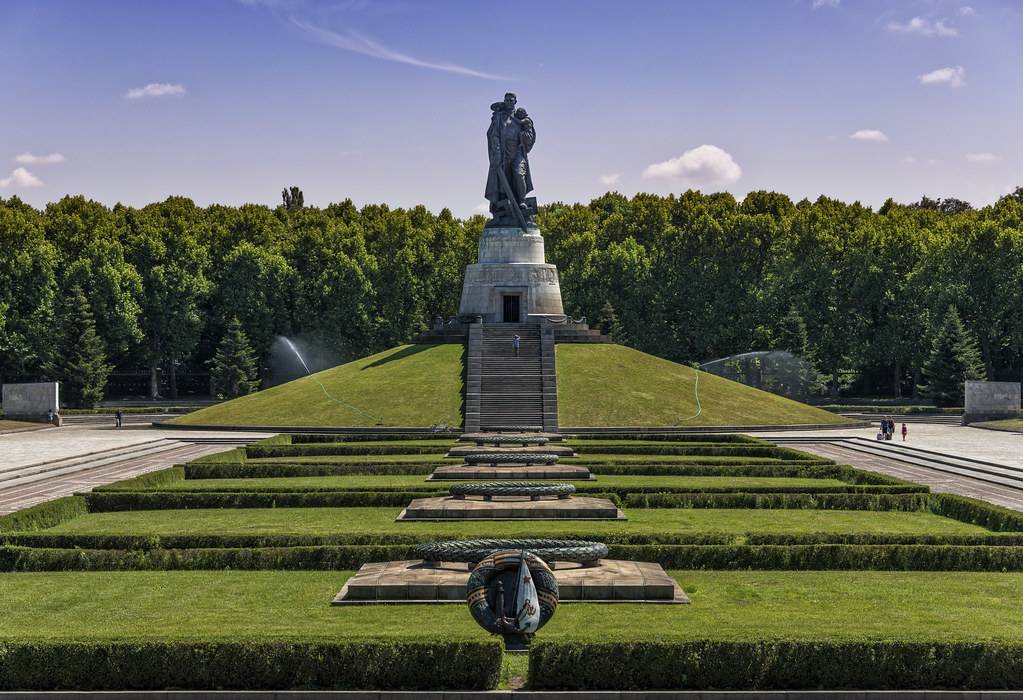
Treptow Park is located next to the River Spree south of central Berlin. If you're interested in World War II history, it's definitely worth a visit. There is a large military cemetery in the park as well as a huge Soviet war memorial, which was built in 1949 to commemorate the Soviet soldiers who fell in the battle for Berlin. Around the park are several plaques, each commemorating a particular battle. In addition to its historical significance, Treptow Park is a great place for family walks on the comfortable walking paths or for boating. There is also a local beer garden for beer lovers.
Address: Treptower Park, 12435 Berlin.
Official webpage: https://www.berlin.de/tourismus/parks-und-gaerten/3561249-1740419-treptower-park.html
GDR museum (DDR Museum)
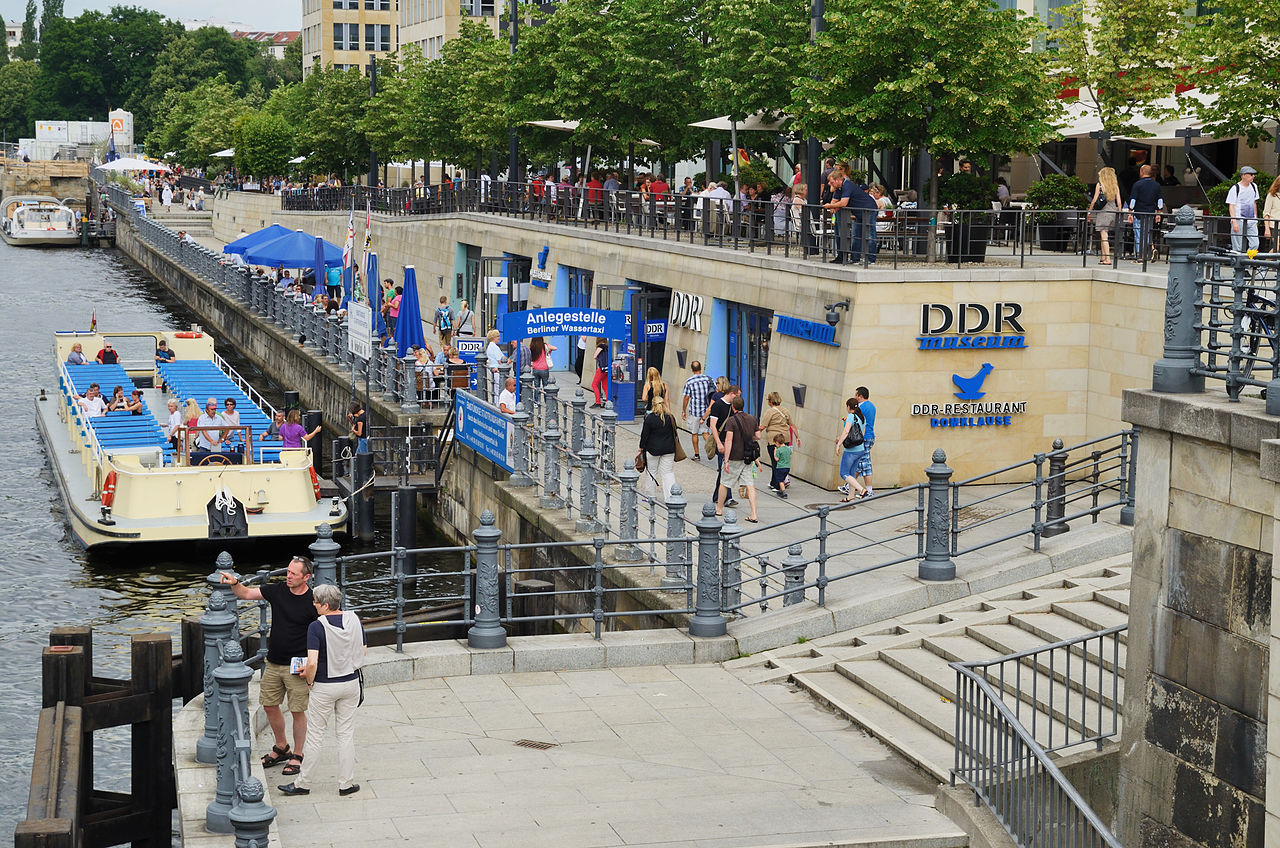
The GDR Museum is located in the heart of the former East German government district and is dedicated to the history of the now defunct German Democratic Republic. Here you can see what life was like in the former East Germany. Look at the flats where people lived, try on the most common clothes of that period, get acquainted with the hidden listening devices ("bugs") which were used to spy on East Germans. All exhibits are accompanied by explanatory information in English and German.
Address: Karl-Liebknecht-Str. 1, 10178 Berlin.
Official website: https://www.ddr-museum.de/
Berlin TV Tower (Berliner Fernsehturm)

The Berlin TV Tower is located in the metropolitan Mitte district near Alexanderplatz. The tower is the tallest structure in all of Germany, and its observation deck offers an incredible panoramic view of the city. The TV Tower was built in the 1960s and it is one of the most significant modern buildings of that era in Germany. At the time of its construction it was considered a marvel of engineering. Just below the main observation deck is the first-class Sphere restaurant, where you can enjoy a bird's eye view of the surrounding countryside.
Address: Panoramastraße 1A, 10178 Berlin.
Official website: https://tv-turm.de/
Kurfürstendamm Boulevard (Kurfürstendamm)
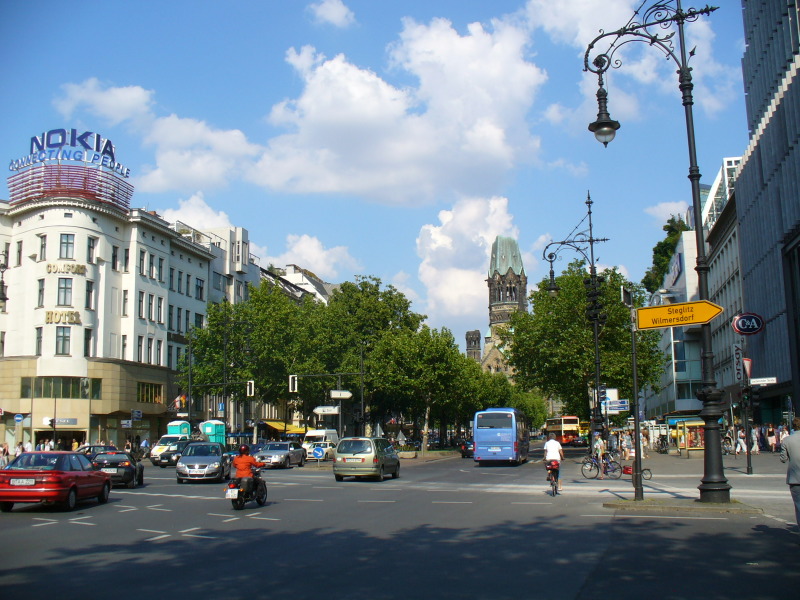
The Kurfürstendamm was built by the Germans as a kind of answer to the French Champs-Elysées in Paris. Trees were planted along the wide road and beautiful buildings were erected on both sides of it. Kurfürstendamm was the heart of the former West Berlin and is still the city's most popular shopping boulevard. Today it's home to shopping centres and brand-name shops. While in this area, it is well worth a visit to KaDeWe or "Kaufhaus des Westens". It is the largest shopping centre in all of Europe and sells just about everything from expensive shoes and textiles to fresh produce and furniture.
Address: Kurfürstendamm, Berlin.
German Historical Museum (Deutsches Historisches Museum)
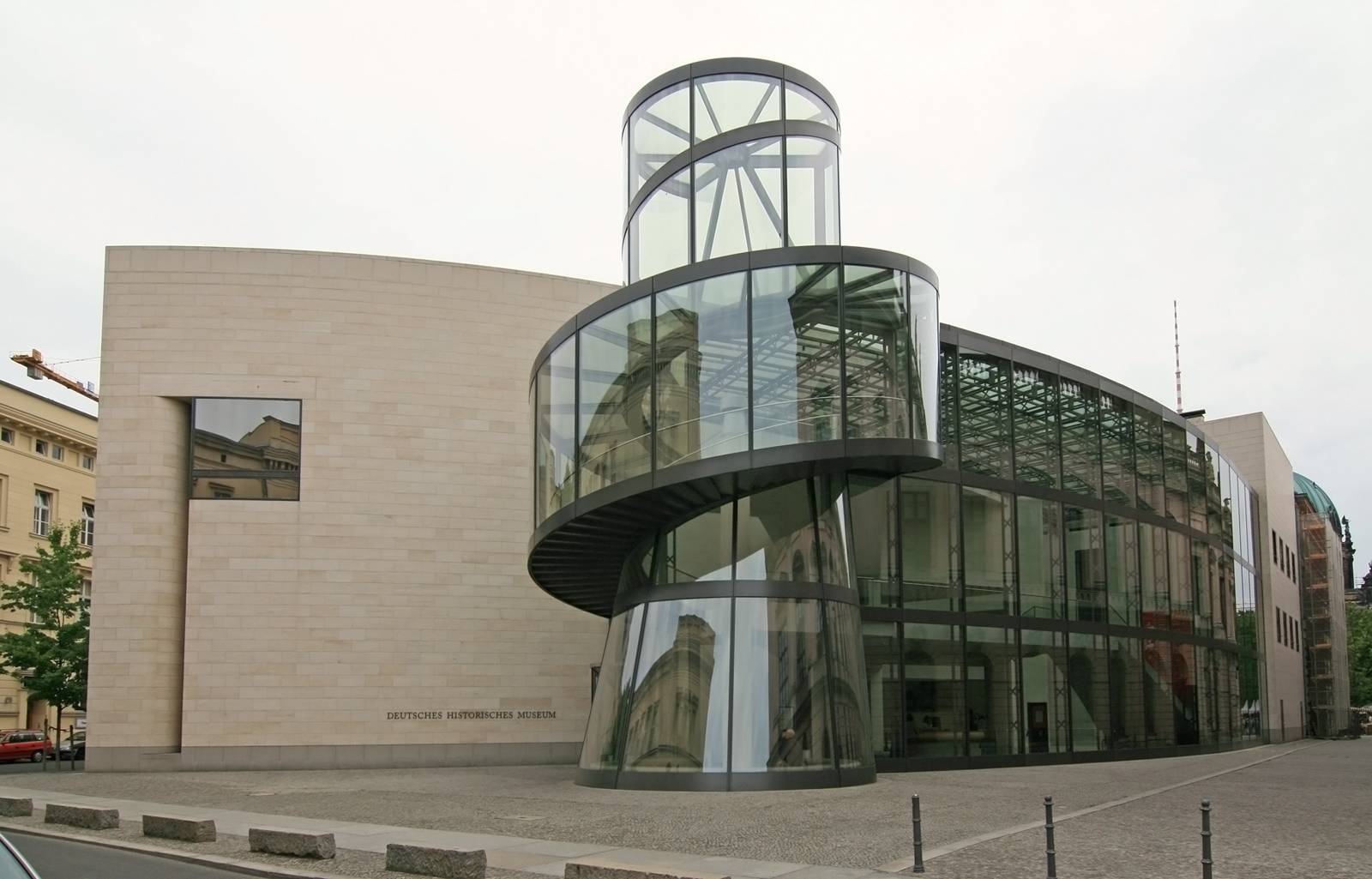
The German Historical Museum will be of interest to those who want to know what Germans have been doing for the past two millennia. It presents the entire history of the German people right up to the present day, and its exhibitions are presented in as simple and logical a manner as possible. The museum is located in two adjacent buildings: the traditional Zeughaus and the more modern Exhibition Center, which was designed by architect Ieoh Ming Pei. Here you can see World War II posters, look at 19th century maps, or admire modern sculptures by the best German craftsmen.
Address: Unter den Linden 2, 10117 Berlin.
Official website: https://www.dhm.de/
Oberbaumbrücke Bridge (Oberbaumbrücke)

The Oberbaum is a two-level bridge that crosses the Spree and connects the districts of Friedrichshain and Kreuzberg. The bridge links the former East Germany with the West Germany, so it is not just an architecturally beautiful but also historically significant structure. The Oberbaum Bridge is one of the most photographed landmarks in Berlin. It was a kind of symbol of unity — a way of connecting East and West in a once-divided Berlin. The bridge can be crossed on foot — there are walking paths.
Address: Oberbaumbrücke, 10243 Berlin.
Olympic Stadium (Olympiastadion)

Few sports arenas in the world have seen as many iconic historical events as Berlin's Olympic Stadium. When the Nazis came to power in 1933, they immediately decided that the upcoming 1936 Olympic Games should serve propaganda purposes, so architect Werner Julius March was asked to design a monumental stadium that would shock the minds of contemporaries. The result was an architectural masterpiece in which American athlete James Cleveland "Jesse" Owens won four gold medals, disproving the myth of the superiority of the Aryan race. A huge steel roof weighing 3,500 tonnes has since been installed in the stadium and its capacity has been reduced from 100,000 to 74,475. You can buy a separate guided tour of the stadium, or simply take a ticket to a game of the local Hertha football team to fully enjoy the atmosphere of the place.
Address: Olympischer Platz 3, 14053 Berlin.
Official website: https://olympiastadion.berlin/
Berliner Philharmoniker (Berlin Philharmonie)

The Berlin Philharmonic is consistently ranked among the top three philharmonic halls in the world, so true classical music lovers know exactly what to visit in Berlin first. The concert hall, famous for its unusual roof, opened on the southern edge of the Tiergarten in 1963. At that time it stood on a vacant lot formed by the Berlin Wall, but today it is located in the heart of the Kulturforum, which includes an ensemble of important cultural facilities. An interesting and rather controversial fact: in the early 1960s pistols were used to test the acoustics during the construction of the hall.
Address: Herbert-von-Karajan-Straße 1, 10785 Berlin.
Official website: https://www.berliner-philharmoniker.de/
German Technical Museum (Deutsches Technikmuseum)

The German Technical Museum showcases a magnificent collection of transport and industry from different eras. Children will love the fleet of heavy vehicles such as steam and diesel locomotives, as well as the giant aviation hall with the V-1 bomb, the Arado Ar 96, the wreckage of the Stuka and Lancaster dive bombers, the Messerschmitt Bf 110 and the Focke-Wulf Fw 200 Condor. When it comes to industry, the museum not only shows how things were made — it also shows the process of making paper and printing newspapers. Children can also visit the Science Centre, where they can deepen their understanding of electricity, light and magnetism by means of experiments.
Address: Trebbiner Str. 9, 10963 Berlin.
Official website: https://technikmuseum.berlin/
Western Trading House (Kaufhaus des Westens)

The Western Trading House (KaDeWe for short) is a unique shopping complex. This eight-storey building is the most famous shopping destination in all of Germany and the second largest shopping centre in Europe. The first three floors offer women's and men's high-end fashion, while for those looking for something a little more upmarket, head down to the basement in the "Luxury Boulevard", a miniature version of 5th Avenue. But for the rest of us, the main destination is the Delicatessen Room on the sixth floor, where a host of pastry chefs and bakers work their magic. On the seventh floor there is a conservatory with a 1,000-seat KaDeWe self-service restaurant.
Address: Tauentzienstraße 21-24, 10789 Berlin.
Official website: https://www.kadewe.de/
Natural History Museum (Museum für Naturkunde)

The largest dinosaur skeleton in the world can be seen in the central hall of Berlin's Museum of Natural History. This 13.27 metre tall sauropod would weigh 55 tonnes if it were alive. The remains of the predator were discovered in Tanzania in the early 20th century. Other famous exhibits at the museum include the Tyrannosaurus Tristan and the fossils of Archaeopteryx (a predator that became the missing link between reptiles and birds). The museum galleries offer many other interesting things to see: 4,500 different mineral specimens, a stuffed Mauritian dodo and an interesting exhibition that illustrates the theory of evolution clearly and vividly.
Address: Invalidenstraße 43, 10115 Berlin.
Official website: https://www.museumfuernaturkunde.berlin/
The Old National Gallery (Alte Nationalgalerie)

When Joachim Heinrich Wilhelm Wagener, a wealthy banker and patron of the arts, died in 1861, he bequeathed his rich collection of 262 paintings to Prussia. This collection became the basis of the National Gallery, and work on the building for it began two years after the patron's death — in 1863. The result is a majestic neoclassical temple designed by architect Friedrich August Stüler. In terms of content, works from the 19th century are displayed here exclusively: works of Romantic art by Caspar David Friedrich and his contemporaries, works by the Impressionists, including paintings by Pierre-Auguste Renoir and Oscar-Claude Monet, early modernist paintings by Max Liebermann and Adolph Friedrich Erdmann von Menzel.
Address: Bodestraße 1-3, 10178 Berlin
Official webpage: https://www.smb.museum/museen-einrichtungen/alte-nationalgalerie/home/
Sony Centre complex (Sony Center)
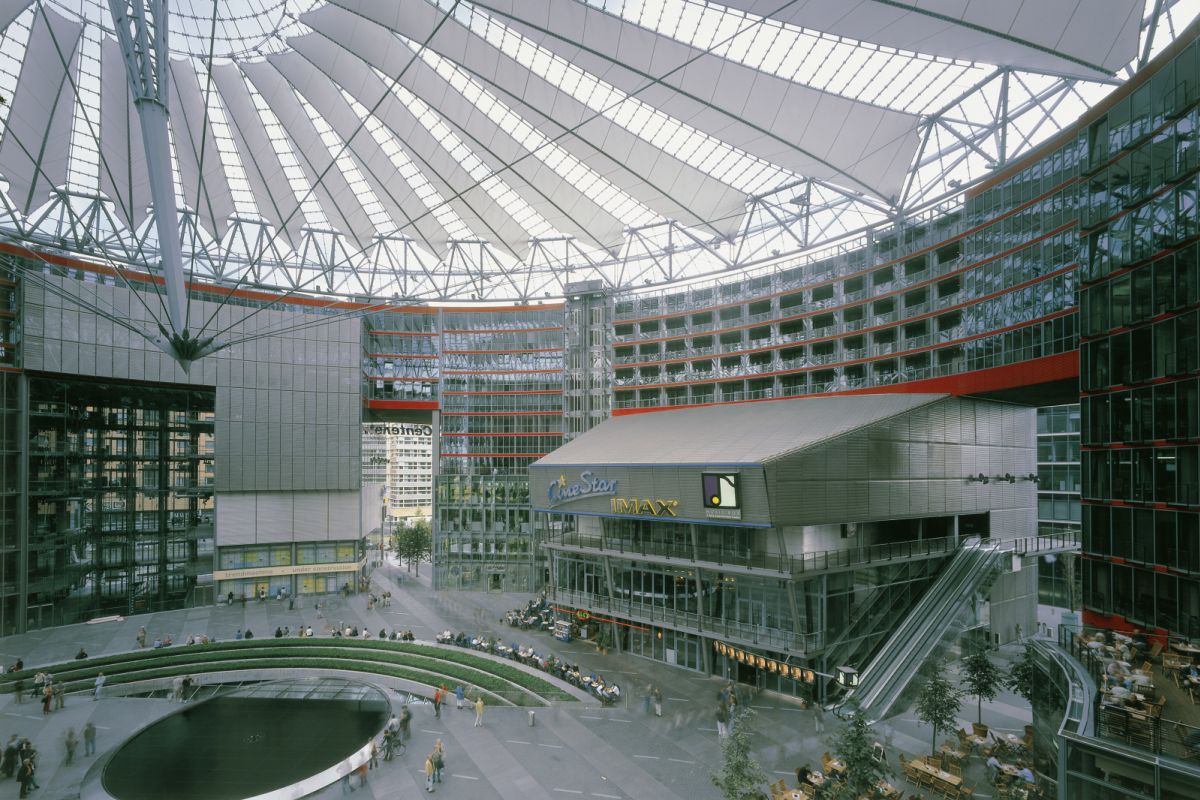
The main attraction of the new Potsdamer Platz is the luxury building complex built in 1990 by Helmut Jahn and Peter Walker. "The Sony Centre is an oval-shaped plaza with seven buildings around it, all under a single dome. It has everything: shops, hotels, museums, cinemas, IMAX cinemas, restaurants, offices, and is also suitable for children, with the Legoland Discovery Centre, an indoor theme park where young travellers can lose track of time.
Address: Kemperplatz 1, 10785 Berlin.
Official website: https://www.sonycenter.de/
Botanic Garden (Botanischer Garten und Botanisches Museum)

The 43-hectare Berlin Botanical Garden, with more than 22,000 plant species, can be considered a true paradise on earth for gardeners and green technology enthusiasts. The garden is situated in Dahlem, where it was relocated from the city centre between 1897 and 1910. It was during this period that the largest of the park's 15 greenhouses, the Great Tropical House (Große Tropenhaus), was built. The temperature inside is kept at 30°C throughout the year — in order to provide a comfortable environment for the giant bamboo that grows there. Outside the garden, the 14-hectare arboretum features a romantic "Rose Gazebo". True botanical connoisseurs will be interested in the Botanical Museum, which has a stunning collection of rare plant specimens that is unlikely to leave any expert untouched.
Address: Königin-Luise-Straße 6-8, 14195 Berlin.
Official website: https://bo.berlin/
Stasi Museum (Stasimuseum)

In the former headquarters of the GDR State Security Service, you can learn about another difficult period in German history. Visiting the museum, one can imagine the scale of the Stasi's surveillance of GDR citizens and appreciate their efforts to infiltrate Western socio-political structures. Fans of espionage stories can enjoy the miniature cameras, bugs and concealed weapons, while the staff can also explain the structure of the Stasi and its methods of recruitment. A trip upstairs is a must; everything is as it was in 1989. The desks, chairs, cupboards and safes are all still in place. Here you can enter the office of the head of the Stasi, Erich Fritz Emil Mielke, the man known as "Master of Fear".
Address: Normannenstraße 20/Haus 1, 10365 Berlin.
Official website: https://www.stasimuseum.de/
